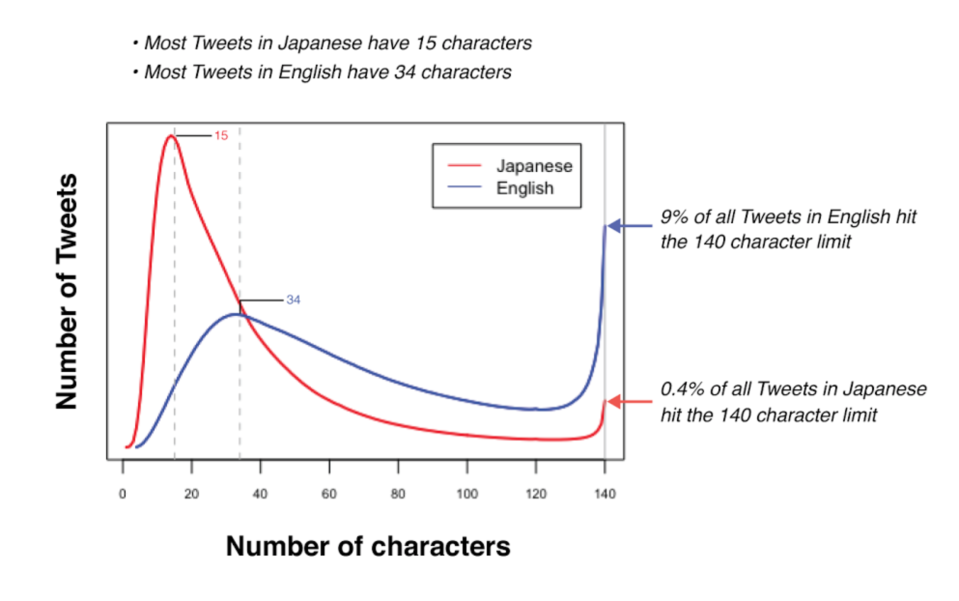Twitter tests new 280-character limit with some users

Twitter has grown by leaps and bounds since it launched in 2006, yet there’s one constant that defines the social network to this day: that 140-character limit for tweets.
Twitter (TWTR), however, is seriously thinking about changing that.
The company on Tuesday announced it would let a small, random sampling of users tweet updates up to 280 characters long moving forward — double the previous amount. In a company blog post, Twitter Product Manager Aliza Rosen and Senior Software Engineer Ikuhiro Ihara explained that the experiment would not apply to languages such as Japanese, Chinese and Korean, simply because those languages already allow their native speakers to convey roughly twice the amount of information in one character compared with many other languages, including English, Spanish and Portuguese.
“Our research shows us that the character limit is a major cause of frustration for people tweeting in English, but it is not for those tweeting in Japanese,” Rosen and Ihara wrote in the blog post.
Indeed, 9% of all tweets in English hit the 140-character limit, while just 0.4% of tweets in Japanese do the same. Rosen and Ihara added that in all markets where people don’t have to “cram” their thoughts into 140 characters and have some room to spare, Twitter sees more people tweeting, and ultimately more engagement.

While Twitter plans on rolling out this more generous character limit out initially to a small group before making a decision to roll it out to all of its users, many previous features it’s tested have wound up mainstays, such as replacing stars with hearts in November 2015 as a way to favorite or “like” tweets.
Still, Twitter’s latest test signifies a potential watershed moment for the publicly traded company which posted better-than-expected earnings and revenue growth during last quarter but reported a disappointing 328 million monthly active users — virtually unchanged from the quarter before. (Indeed, its sluggish user growth in recent quarters may help explain why Twitter’s stock has increased just 3% so far this year.)
With the rollout of this potential new character count, Altimeter Group analyst Susan Etlinger contends Twitter is trying to recapture a little of the magic it had five years ago, before bots and political discussions became more of a mainstay within the Twitter community. That veritable political morass can be fatiguing for those looking for lighthearted back-and-forth.
“Adding more space is probably a decent move,” Etlinger contended. “This is a way to add a little more nuance and richness without going overboard and undermining the fun of Twitter, which is that you do have to edit yourself.”
In previous years, reports surfaced that Twitter was exploring increasing the character limit for tweets — reports Twitter CEO Jack Dorsey quickly quashed by calling the 140-character limit “a beautiful constraint.”
Now it may be a constraint Twitter users won’t have to deal with for much longer.
—
JP Mangalindan is a senior correspondent for Yahoo Finance covering the intersection of tech and business. Email story tips and musings to jpm@oath.com. Follow him on Twitter or Facebook.
More from JP:

 Yahoo Finance
Yahoo Finance 
